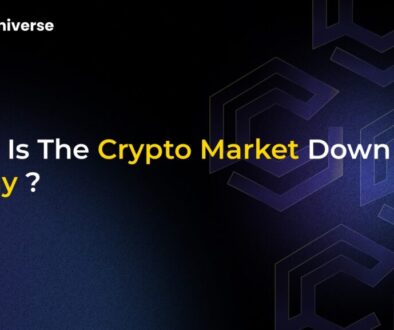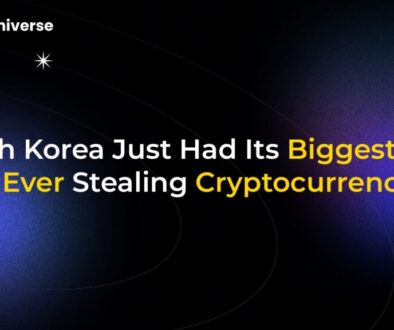Ensuring Cardano’s Future Growth: Charles Hoskinson’s Warning on the IOG Budget

Cardano at a Crossroads: Development Funding Sparks Debate
Cardano, a prominent proof-of-stake blockchain platform, finds itself at a pivotal moment. Its founder, Charles Hoskinson, has issued a significant warning: the future growth trajectory of Cardano, and potentially the value of its native token ADA, could be hampered if the community does not approve a crucial budget proposal for Input Output Global (IOG), one of the primary development companies behind the network. Hoskinson suggests that securing this funding is vital for ADA to potentially reach price targets between $3 and $10.
This situation highlights the delicate balance within Cardano’s evolving decentralized governance model as it transitions into the Voltaire era. The community, specifically ADA holders, must now weigh the importance of IOG’s continued involvement against the principles of full decentralization and alternative funding pathways.
What is IOG Asking For? A Look at the 2025 Budget Proposal
IOG, through its research arm Input Output Research (IOR), has formally proposed a budget to fund its development roadmap for 2025. The proposal, titled “Input Output Research (IOR): Cardano Vision – Work Program 2025,” requests 26.848 million ADA (approximately $13.42 million at the time of the proposal).
These funds are earmarked for several key areas critical to Cardano’s advancement:
- Personnel: Covering the costs for a dedicated team of 56 full-time staff, including vital engineers and research scientists.
- Infrastructure: Funding necessary equipment, software licenses, and operational overhead.
- Core Development Goals: Focusing on enhancing Cardano’s:
- Scalability: Improving transaction speed and network capacity.
- Sustainability: Ensuring the long-term health and efficiency of the blockchain.
- Interoperability: Building tools to connect Cardano with other blockchain networks.
The proposal falls under the Research category within Cardano’s governance framework and underscores that the final allocation is subject to community feedback, prevailing market conditions, and formal on-chain approval.
Decentralized Governance: Cardano’s Grand Experiment
This budget debate is taking place against the backdrop of Cardano’s ambitious move towards full decentralized governance, marked by the ongoing Voltaire era and the significant Chang upgrade.
Key aspects of this transition include:
- On-Chain Voting: Empowering ADA holders to directly vote on network updates and funding proposals, like the IOG budget.
- Community Control: Shifting power away from the founding entities (like IOG) towards stake pool operators (SPOs), delegated representatives (dReps), and a constitutional committee.
- Self-Sustainability: Creating a system where the blockchain can fund its own development and maintenance through the treasury, guided by community decisions.
However, this transition isn’t without challenges:
- Balancing Act: Finding the right equilibrium between broad community participation (decentralization) and the ability to make timely, effective decisions (efficiency).
- Informed Participation: Ensuring ADA holders are sufficiently educated and engaged to make well-informed governance choices.
- Fair Representation: Guaranteeing that the voting process accurately reflects the diverse interests within the Cardano ecosystem.
The IOG budget proposal serves as a real-world test case for this new governance paradigm.
Consequences and Choices: What Happens Next?
Charles Hoskinson’s warning is stark: failure to approve the budget could lead IOG to reallocate its resources away from Cardano-specific projects. Given that IOG currently oversees a significant portion of Cardano’s core development, such a move could potentially slow down progress on critical updates, scalability solutions, and interoperability features.
This situation is further complicated by reported discussions and proposals within the ecosystem, including suggestions for budget adjustments, highlighting the active debate surrounding funding priorities. The community faces a crucial decision:
- Approve the Budget: Support IOG’s proposed roadmap and maintain the current development momentum driven by one of the network’s core contributors. This path relies on IOG’s established expertise and vision.
- Reject or Modify the Budget: This could signal a desire for a more diversified approach to development funding or a different strategic direction. It might necessitate relying more heavily on alternative funding mechanisms.
Exploring Alternative Funding Paths
Cardano’s ecosystem isn’t solely reliant on IOG for funding development. Alternative avenues exist, empowered by the decentralized governance framework:
- Project Catalyst: A decentralized innovation fund managed by the Cardano treasury, allowing the community to propose and vote on funding for a wide range of projects.
- Initial Stake Pool Offerings (ISPOs): A Cardano-native fundraising method where projects launch their own stake pools, and delegators receive project tokens instead of or alongside ADA rewards.
- Launchpads: Platforms like OccamRazer help incubate and fund new startups building on Cardano.
Opting for these alternatives offers a more distributed approach but requires robust community coordination and carries different risk/reward profiles compared to funding an established entity like IOG.
The Path Forward: A Community Decision
The debate surrounding the IOG budget proposal is more than just a funding decision; it’s a reflection of Cardano’s commitment to decentralized governance and its vision for the future. Charles Hoskinson has clearly stated his view on the budget’s importance for achieving ambitious growth targets.
Ultimately, the power rests with the ADA holders and their chosen representatives. As Hoskinson urged, the focus should be on informed debate and concrete budget decisions made through the established governance channels, rather than getting lost in social media discourse. The outcome will significantly shape Cardano’s development trajectory and demonstrate the real-world application of its decentralized principles.


